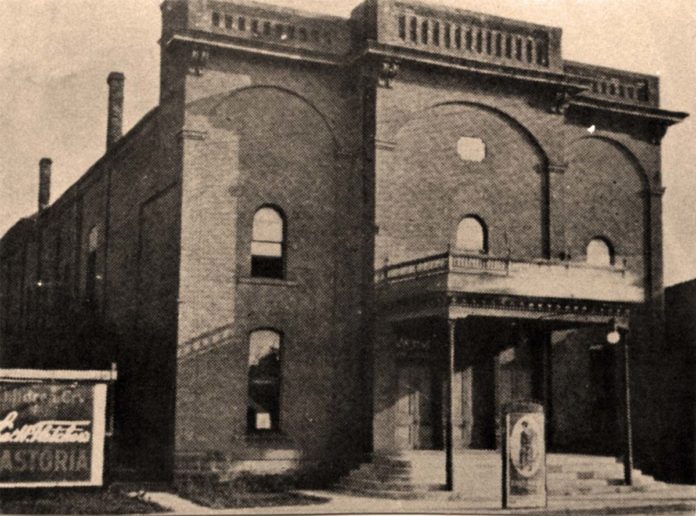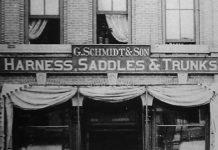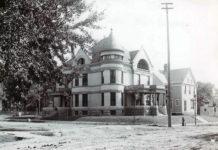Mankato owed its Opera House and its status as a regular stop on the theatrical circuits to the enthusiasm for culture of some of its German citizens.
Local brewers William and Jacob Bierbauer purchased land in the 200 block of South Second Street (between Hickory and Walnut Streets) in 1870 and transferred it to the Mankato Harmonia Association, a German singing society. The association completed the building they named Harmonia Hall, in July 1872.
The Boston Ideal Company played ‘Uncle Tom’s Cabin’ on the night of the 26th to a very large house…. Never before have we witnessed such a crowding assemblage.
Harmonia Hall
The structure cost $11,000, which was paid by donations and loans.
It featured a grand stage, a balcony and a 30-foot ceiling adorned with a dome. The dining area was in the basement and was the same size as the main hall (62 by 70 feet). A grand opening was held on December 25, 1872 with speeches, music and tableaux. The following evening was celebrated with an inaugural ball and dinner.
During its first decade, it was used for performances by local musical and theatrical groups and occasional professional productions.
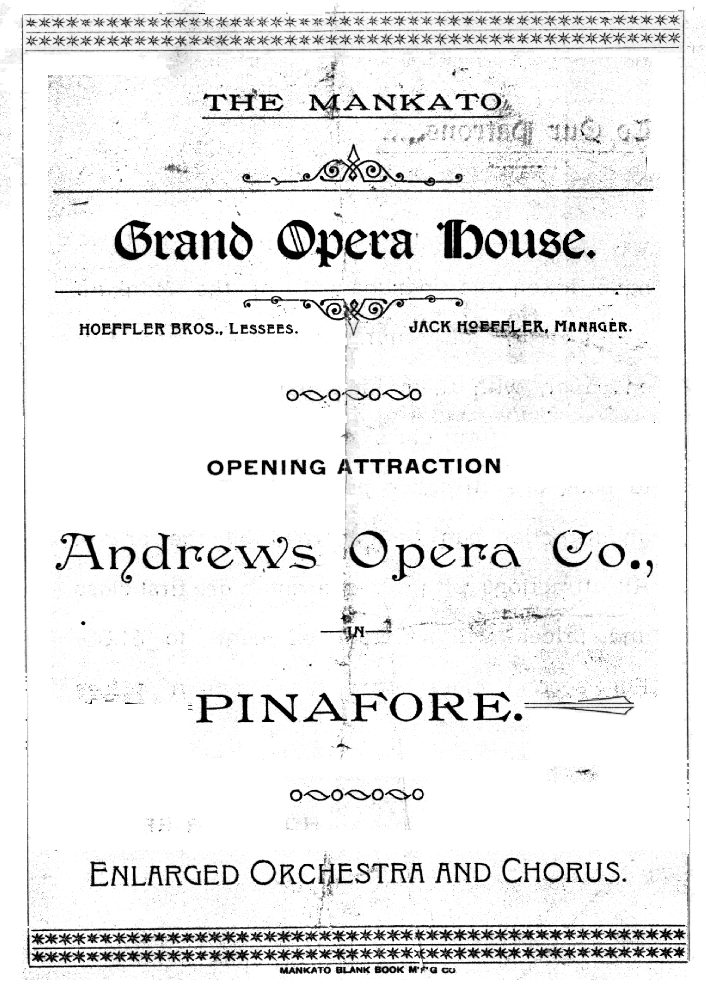
Mankato Opera House
The name was changed to the Mankato Opera House in 1878 when the building was remodeled as a playhouse.
The Mankato Review reported “The Boston Ideal Company played ‘Uncle Tom’s Cabin’ on the night of the 26th to a very large house. The hall was filled, even beyond the over-attendance at the Kellogg concert. Never before have we witnessed such a crowding assemblage.” (Jan. 3, 1882)
Fire!
Just a few weeks later, on January 23, 1882, disaster struck when a fire broke out, which destroyed all but the exterior walls of the building. That evening the temperature was -6 degrees with blowing snow when a policeman discovered the building on fire. Reports alluded to possible arson. Kerosene barrels had been stored in the ticket office and had caught fire.
Rebuilding began and the structure reopened as a theater, the Mankato Opera House in 1883 and was managed by A.G. Bierbauer (son of William).
Everything that came out of New York also came to Mankato because the company would break here when traveling between Minneapolis and Omaha.
Mankato Theatre
Clarence Saulpaugh leased the Opera House in 1893, made extensive improvements and changed the name to Mankato Theatre. Townsfolk seemed to prefer “Opera House,” since this is the name many continued to use. The theater had a seating capacity of 1,000 and was of a horseshoe-type construction, designed so that the stage could be clearly seen from each seat in the house.
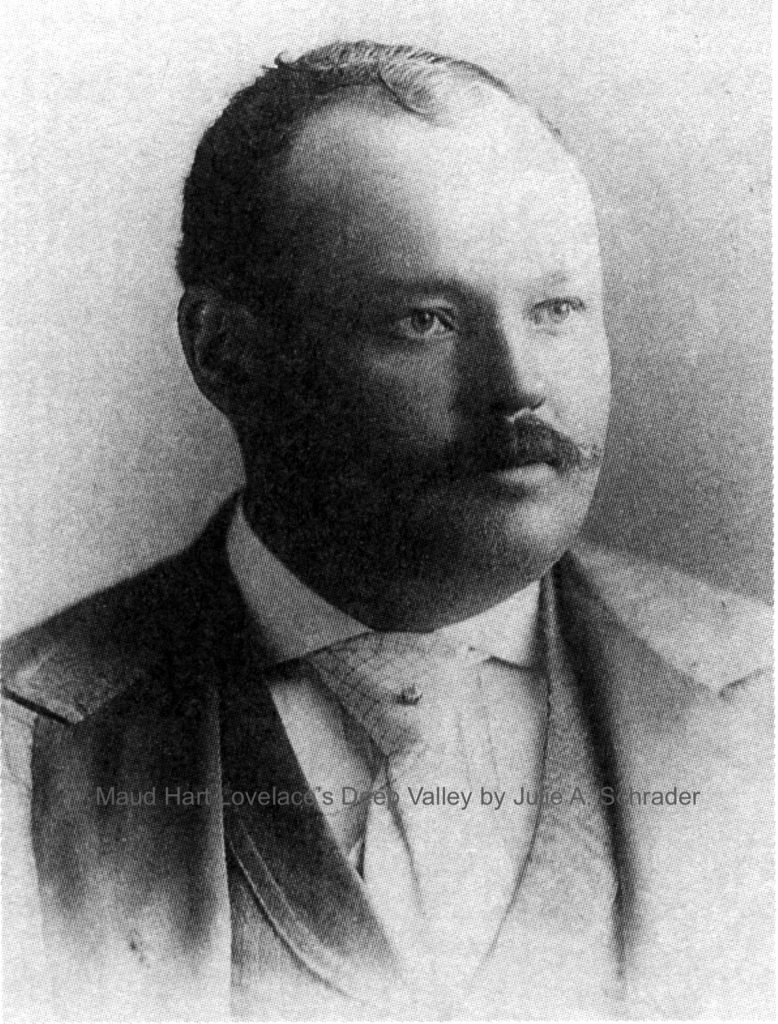
The Opera House was the center of both high culture and popular entertainment in Mankato. The early 20th century was the golden age of the theater in America. Opera companies and symphonic bands joined New York-based musical reviews and straight dramatic theatrical companies traveling by railroad from city to city.
Everything that came out of New York also came to Mankato because the company would break here when traveling between Minneapolis and Omaha.
Many Stars
Many stage stars, as well as boxers and wrestlers, appeared on the stage at the Opera House.
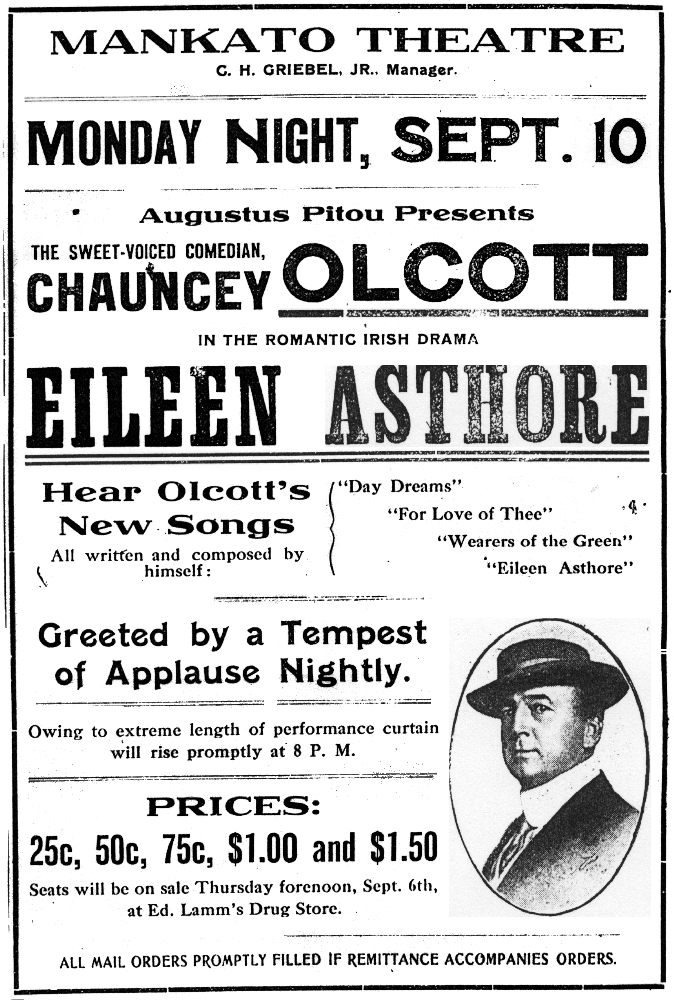
The theatrical programs of the day reveal that almost all of the stage greats appeared at the Mankato Opera House, including Mary Pickford, John L. Sullivan (world-famous boxer), John Drew, Maude Adams, Anna Held, Charles Winnenger, Jos. Jefferson, Gertrude Coughlan, Sousa’s Band, and Mankato’s own Andrews Opera Company.
Mankato vocalists also appeared on the theater stage, including Florence MacBeth, who went on to a career in opera and concert, as well as Lora Lulsdorff.
The Irish tenor Chauncey W. Olcott (1858-1932), was a Mankato favorite. On each of Olcott’s appearances in Mankato special trains were run to the city from towns as far away as Blue Earth and Tracy, Minnesota. Olcott combined the roles of tenor, actor, songwriter and composer in many productions. He is best-known and beloved for his songs; My Wild Irish Rose, When Irish Eyes Are Smiling, and Mother Machree.
Hollywood Killed the Opera Star!
The motion pictures spelled the doom of live theatrical entertainment for Mankato and the country as a whole.
Several movie theaters opened in Mankato, and by 1921 the Mankato Theater was renamed the Orpheum. It became a second-rate movie house where live performances — usually benefits or school theatricals —were given from time to time, the last of which was given in 1928.
That year the building was marked for demolition, but it wasn’t actually taken down until 1931. It was replaced by a showroom and service building of the Holt Motor Company.

